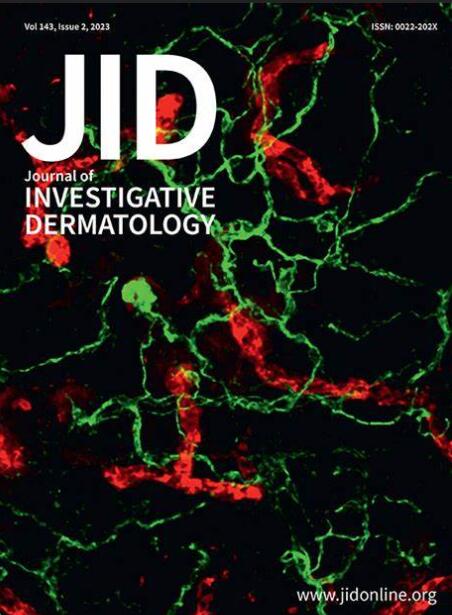优化皮肤表面代谢组学:取样方法、萃取溶剂和分析技术的综合评估。
IF 5.7
2区 医学
Q1 DERMATOLOGY
引用次数: 0
摘要
表征皮肤表面的代谢物指纹为了解皮肤生物学和微生物与宿主的相互作用提供了宝贵的信息。为确保数据的准确性和可重复性,制定皮肤表面代谢组学的标准操作程序(SOP)至关重要。然而,这方面的研究明显不足。在此,我们全面评估了不同的取样材料、提取溶剂、绑带方法(绑带频率和数量)和分析技术,以优化皮肤表面代谢组学。结果表明,D-Squame® D100 胶带与甲基叔丁基醚/甲醇萃取剂的组合是皮肤表面脂质组学的最佳选择。用一种胶带进行五次皮肤绑带程序可产生足够的生物量用于脂质分析,而对于水溶性化合物,最佳绑带程序则各不相同。此外,我们的研究还发现了皮肤表面代谢物之间的关联,其中一些代谢物可能是微生物切割型形成的基础,并有助于深入了解宿主与微生物之间的相互作用。本文章由计算机程序翻译,如有差异,请以英文原文为准。
Optimizing Skin Surface Metabolomics: A Comprehensive Evaluation of Sampling Methods, Extraction Solvents, and Analytical Techniques
Characterizing the metabolite fingerprint from the skin surface provides invaluable insights into skin biology and microbe–host interactions. To ensure data accuracy and reproducibility, it is essential to develop standard operating procedures for skin surface metabolomics. However, there is a notable lack of studies in this area. In this study, we thoroughly evaluated different sampling materials, extraction solvents, taping methods (frequency and number of tapes), and analytical techniques to optimize skin surface metabolomics. Our results showed that the combination of D-Squame D100 tape with a methyl tert-butyl ether/methanol extractant is optimal for skin surface lipidomics. Performing the skin-taping procedure 5 times with 1 tape yields sufficient biomass for lipid analysis, whereas the optimal taping procedure varies for water-soluble compounds. In addition, our study identified associations among the skin surface metabolites, some of which potentially underlie the formation of microbial cutotypes and offer insights into host–microbe interactions.
求助全文
通过发布文献求助,成功后即可免费获取论文全文。
去求助
来源期刊
CiteScore
8.70
自引率
4.60%
发文量
1610
审稿时长
2 months
期刊介绍:
Journal of Investigative Dermatology (JID) publishes reports describing original research on all aspects of cutaneous biology and skin disease. Topics include biochemistry, biophysics, carcinogenesis, cell regulation, clinical research, development, embryology, epidemiology and other population-based research, extracellular matrix, genetics, immunology, melanocyte biology, microbiology, molecular and cell biology, pathology, percutaneous absorption, pharmacology, photobiology, physiology, skin structure, and wound healing

 求助内容:
求助内容: 应助结果提醒方式:
应助结果提醒方式:


